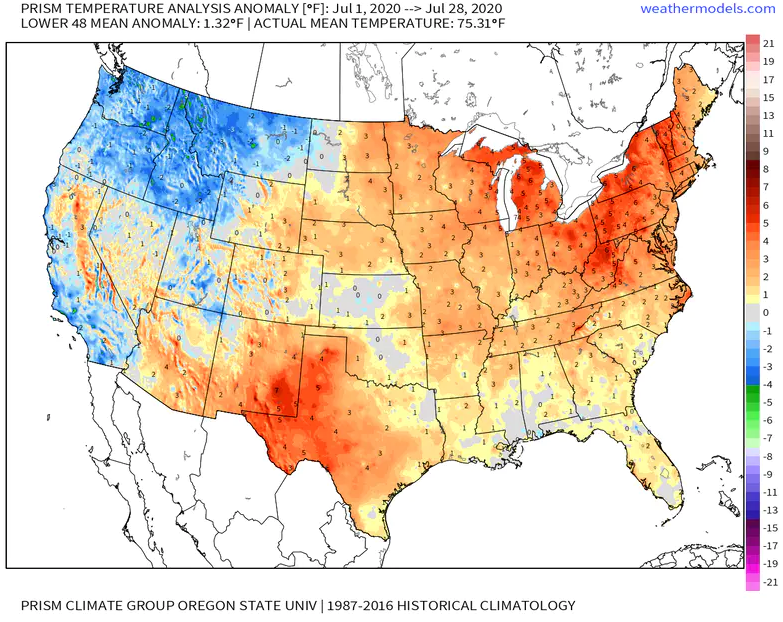The US notched recover high natural gas power burn during the last two weeks. Platts noted that the country has burned a record 43.7 Bcf/day so far this month. It’s not surprising given how low prices are right now and how hot it has been.

As for the new record level, 44.6 Bcf/day was surpassed for the first time on Monday, July 20. Platts said that the daily power burn on 7/20 was north of 45 Bcf/day. That record didn’t stand for long, though. This past Monday marked another all-time high at more than 46 Bcf/day. In fact, for the first time ever during the summer, natural gas burned crossed 6,000 GWhrs for a single day.
Heat along the east coast has been driving extreme demand this month. The Midwest and Great Lakes have been cooling off (versus average) in the last few weeks though after a very hot start to the month. Texas, a major summertime demand center, has also not been too much of a scorcher in recent days – recall Hurricane Hanna’s impacts last weekend. So believe it or not, it could have been MUCH hotter across the CONUS. July 2020 looks to rank as the 3rd hottest month on record according to EIA data. The first 4 weeks of the month have been about 1.3 degrees (F) hotter than the 1981-2010 average.
For utilities, risk managers must assess the chance of a tightening supply-demand balance as we head into the back half of cooling season. The shoulder season of autumn is right around the corner, and early calls for storage come November are near the high 4.0 Tcf mark. What traders are perhaps more antsy over is what storage will be like next spring.
Oil and gas exploration and production firms have cut capex in a huge way this year. That means drilling could be down for the next 12 months, leading to less supply. The forward natural gas curve has increased significantly over the last two months, perhaps due to the expectation of less supply with strong demand.
